Basel was first mentioned as Basilia in the 3rd or the 4th century (different sources provide different data). The time and the historical events have led to a situation in which Basel is nowadays situated at the very triple border between Switzerland, France and Germany. By the number of inhabitants, this is the third largest city in Switzerland (after Zurich and Geneva) and in addition to the seats of large pharmaceutical and chemical companies that are located here, there are also numerous banks (this is Switzerland, after all). Basel is also considered the cultural centre of the country on account of its numerous museums and the city also holds the oldest university in Switzerland founded in 1460. Today, in Basel you can also see, as it’s claimed, one of the most beautiful and best preserved old cities in Europe.
Following my visit to Basel Cathedral, I started with my walk around the Old Town. Some of the old buildings are still residential, some are used for commercial purposes, while some are museums. For instance, the Museum of Natural History Basel (Naturhistorisches Museum Basel) that can be seen in the photo below.
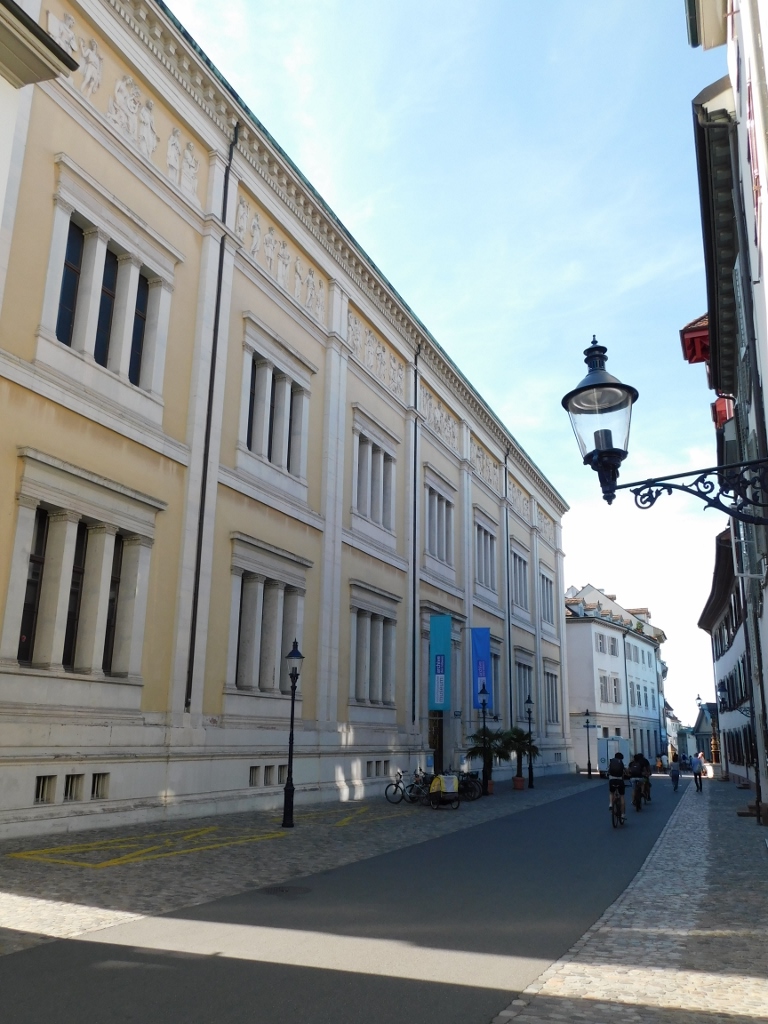 Basel Old Town, Museum of Natural History
Basel Old Town, Museum of Natural History
You can also see some drinking fountains around. Not as many as there are in Bern, but drinking fountains are certainly an important part of Basel as well, so one should pay attention to them.
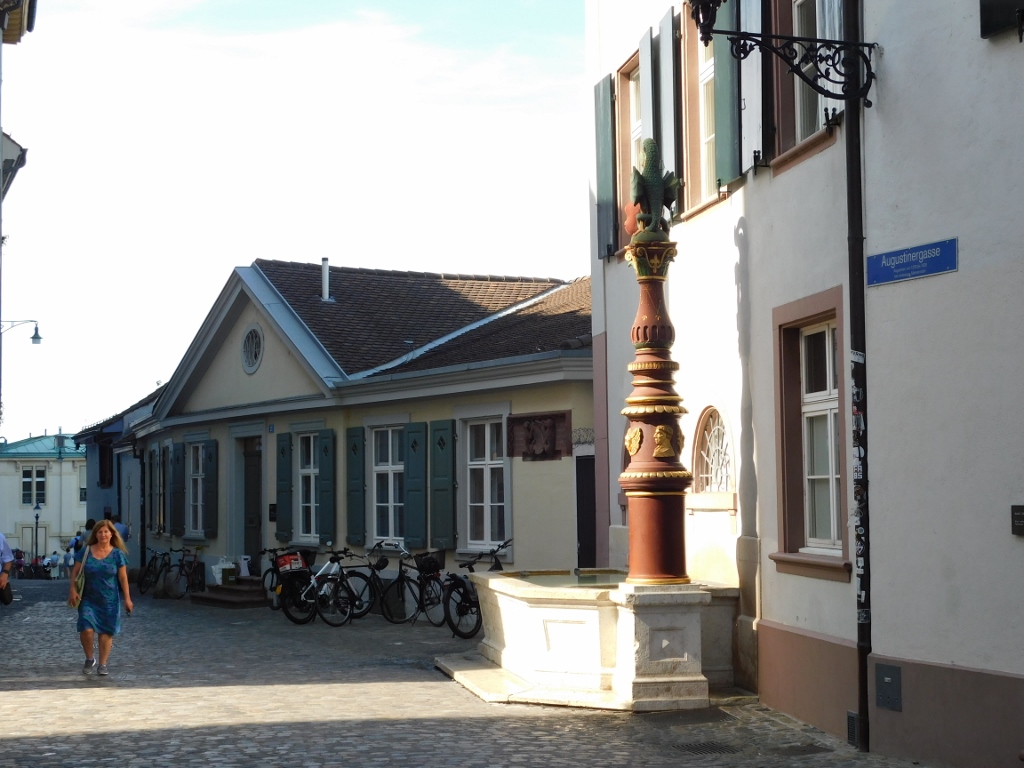 Basel Old Town, a detail with a fountain
Basel Old Town, a detail with a fountain
Not far from here I got to yet another fountain, Sevogelbrunnen or Seabird Fountain, but I found this one particularly interesting. Namely, when I got there, two little girls were having a giggling bath in the pool that is a part of the fountain. I tried to take a photo when the two of them were not in the picture, but the orange swim ring can be seen quite well.
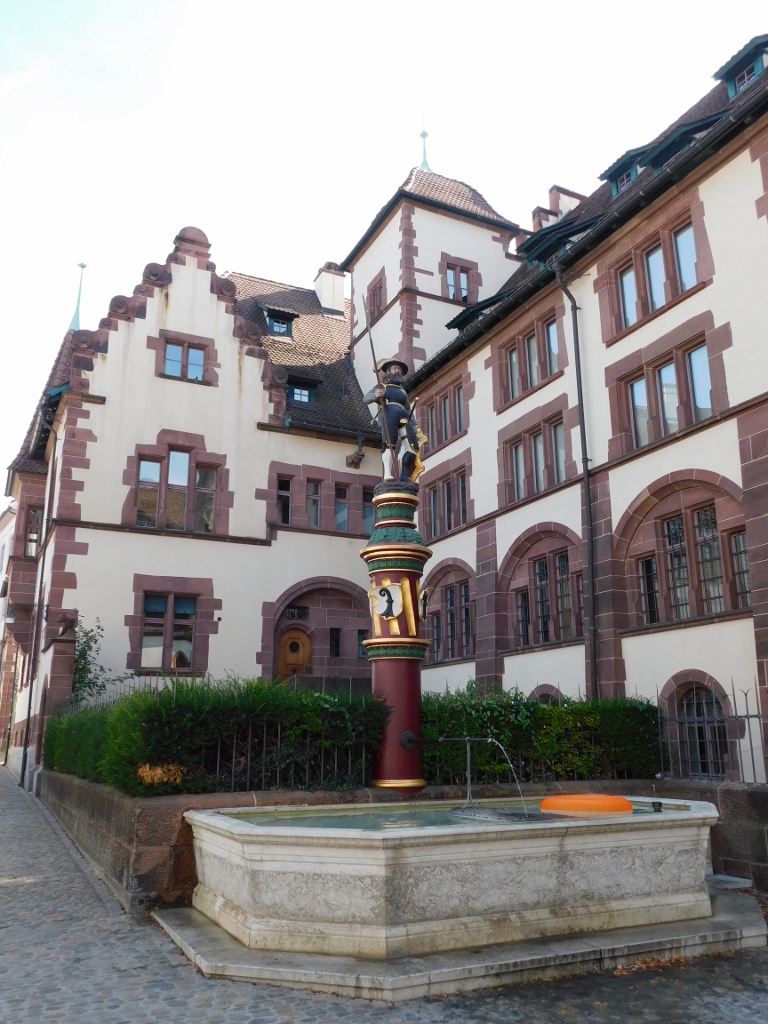 Sevogelbrunnen
Sevogelbrunnen
I would not have found anything unusual in the fact that two little girls were playing in water at over 30 degrees C, had this not been in the middle of the city. Moreover, the fountain is situated in a small square between the Basel-Stadt State Archive and Martin’s Church (Martinskirche) that is considered the oldest in Basel since it was first mentioned in some documents at the beginning of the 12th century.
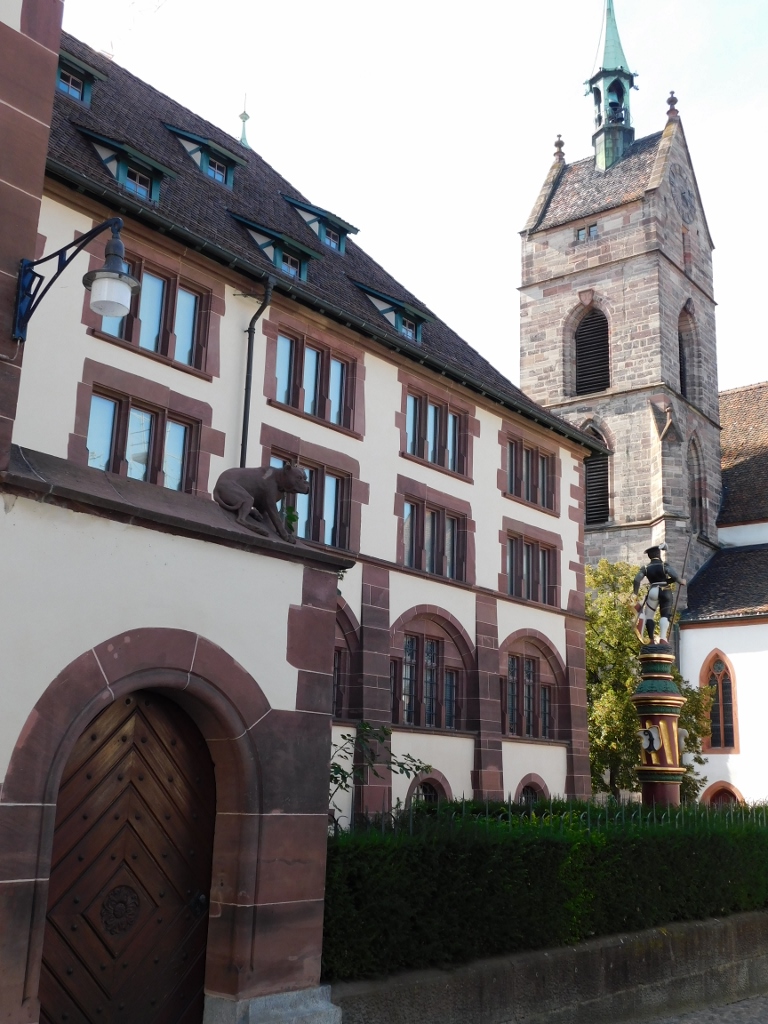 Archive building and the tower of Martin’s Church, while the Sevogelbrunnen is on the right-hand side, below the tower
Archive building and the tower of Martin’s Church, while the Sevogelbrunnen is on the right-hand side, below the tower
Then I continued with my further sightseeing of the Old Town and there were some very lovely and charming flat streets, but also some stairways and steep streets that I used in order to get down to the Marktplatz or the Market Square.
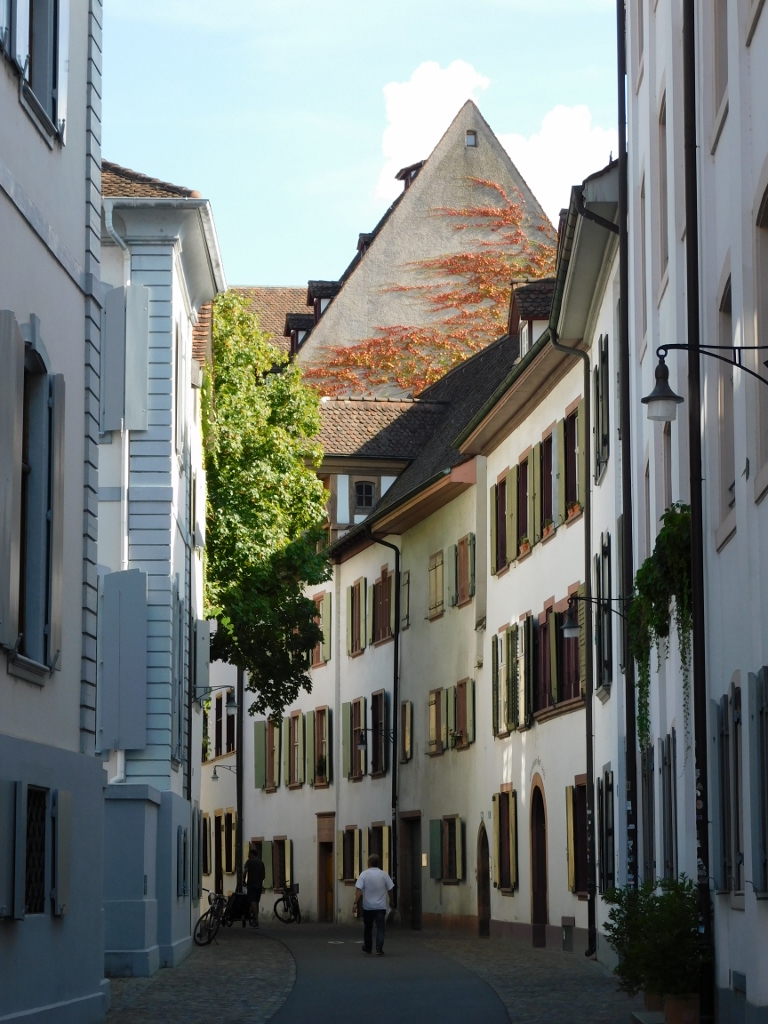 Basel Old Town, a detail
Basel Old Town, a detail
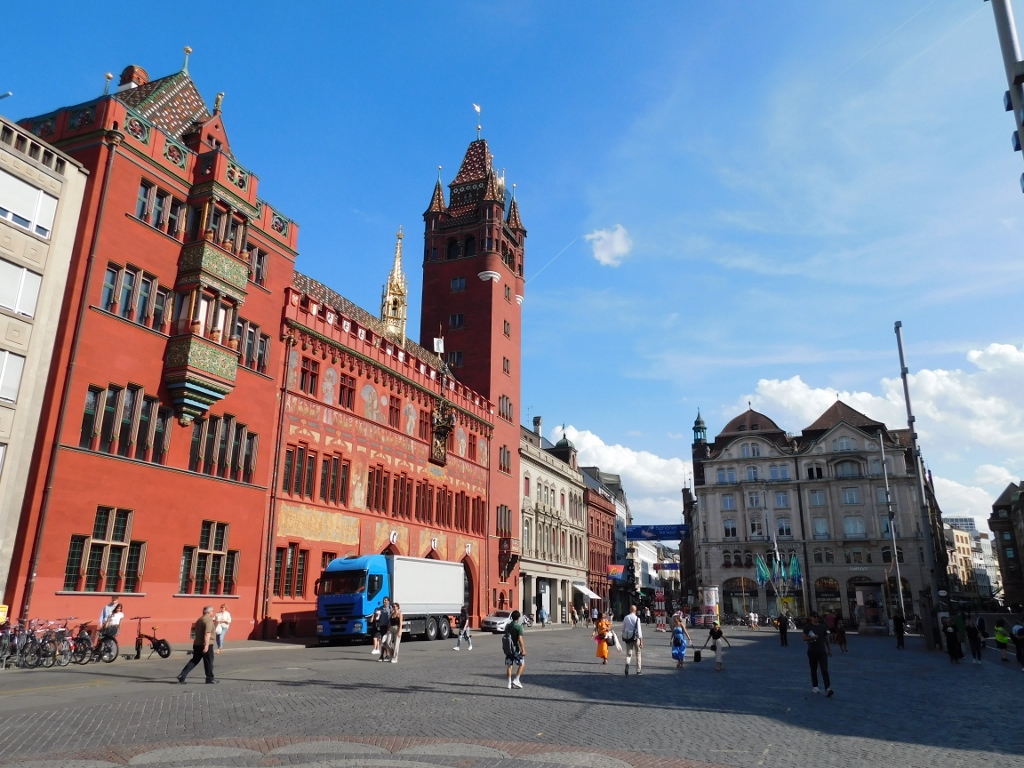 Marktplatz
Marktplatz
This is one of the most famous squares in Basel and when you get here it is quite clear which is the main building in the square. This is the City Hall with its bright red facade.
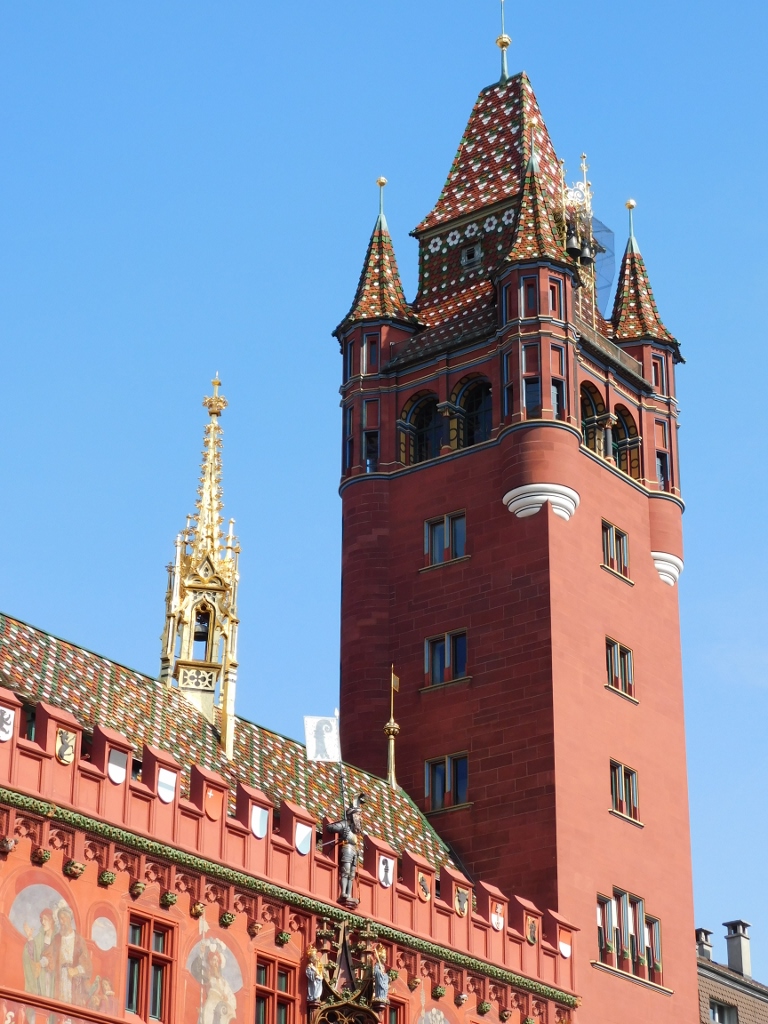 City Hall, a detail
City Hall, a detail
Basel joined the Swiss Confederacy in 1501 and instead of the old town hall, they built a new one in the period from 1504-1514. This second town hall was the basis for the building seen here today. The building was expanded and restored from 1898 to 1902.
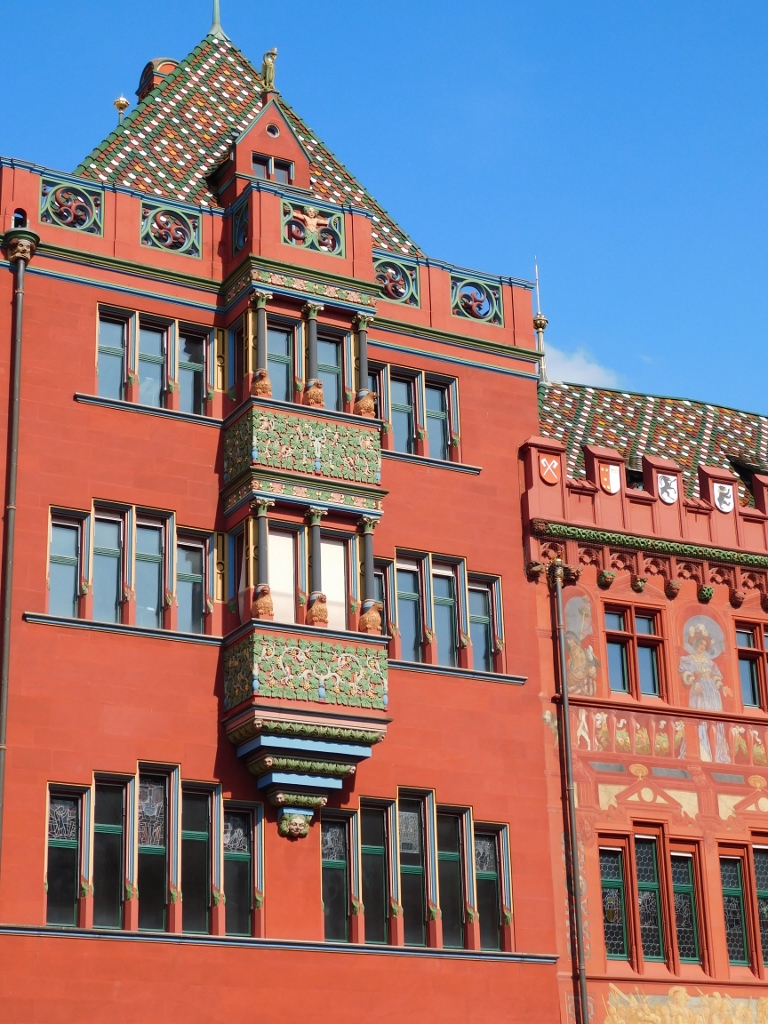 City Hall, a detail
City Hall, a detail
By the way, there is a direct tram line linking the square and the train station in Basel and if the visitor does not feel like walking almost 1.5 km, which is the distance between these two points, it is easy to use a tram that takes a dozen minutes or so.
Not far from the Marktplatz there is also the Fischmarkt where, as the name suggests, there used to be a fish market a long time ago. Nowadays, here one can see a fountain of the same name which is one of the more important monuments of culture in the city.
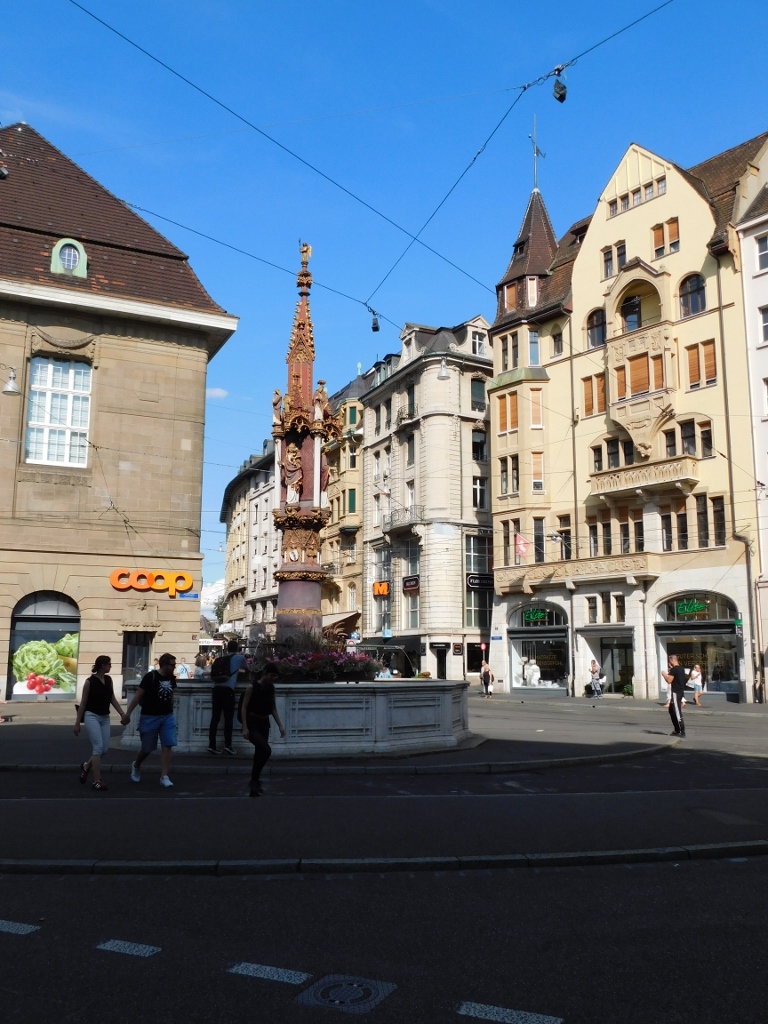 Fischmarkbrunnen
Fischmarkbrunnen
Now I went from this square to do the sightseeing of some smaller streets within the Old Town that are collectively called the Old Streets – Schneidergasse, Spalenberg, Gemsberg and Heuberg. Some of them are wider, some are narrower, there are also smallish or bigger squares, but in any case, I can wholeheartedly recommend this walk.
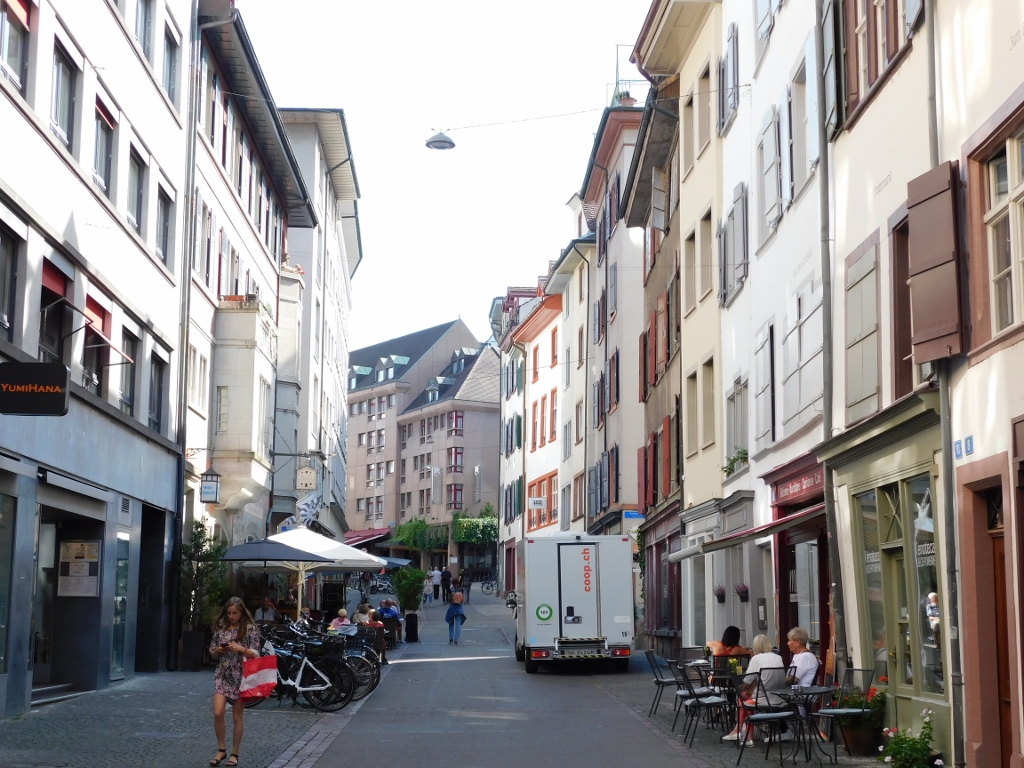 Old Streets of Basel, a detail
Old Streets of Basel, a detail
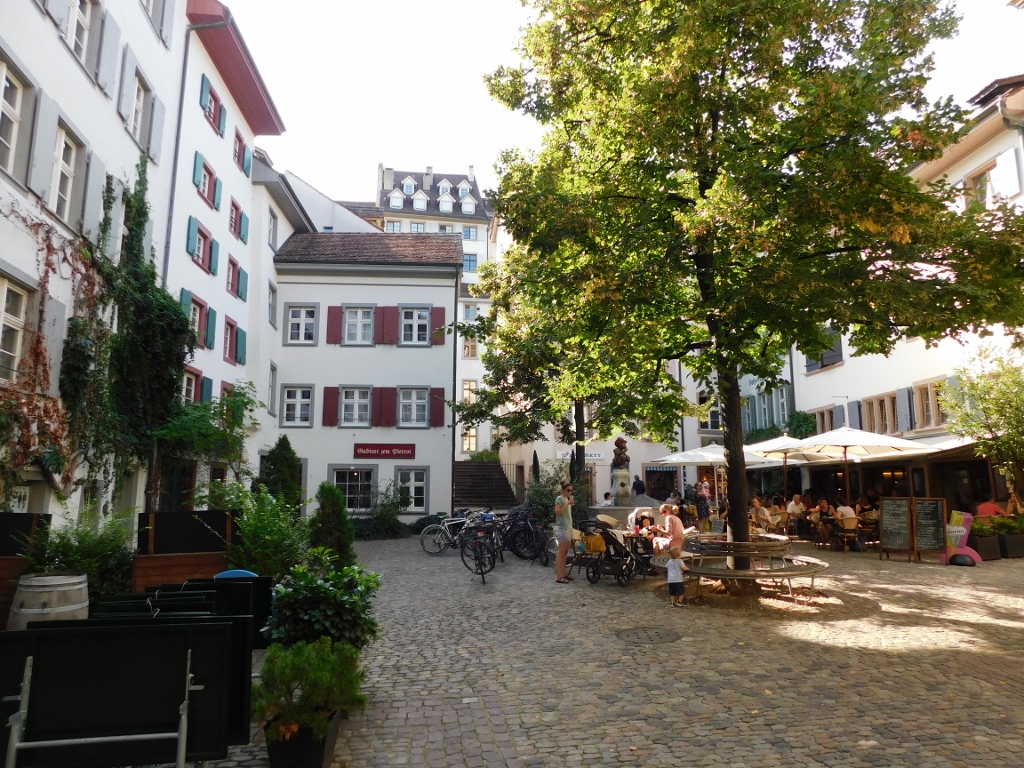 Old Streets of Basel, a detail
Old Streets of Basel, a detail
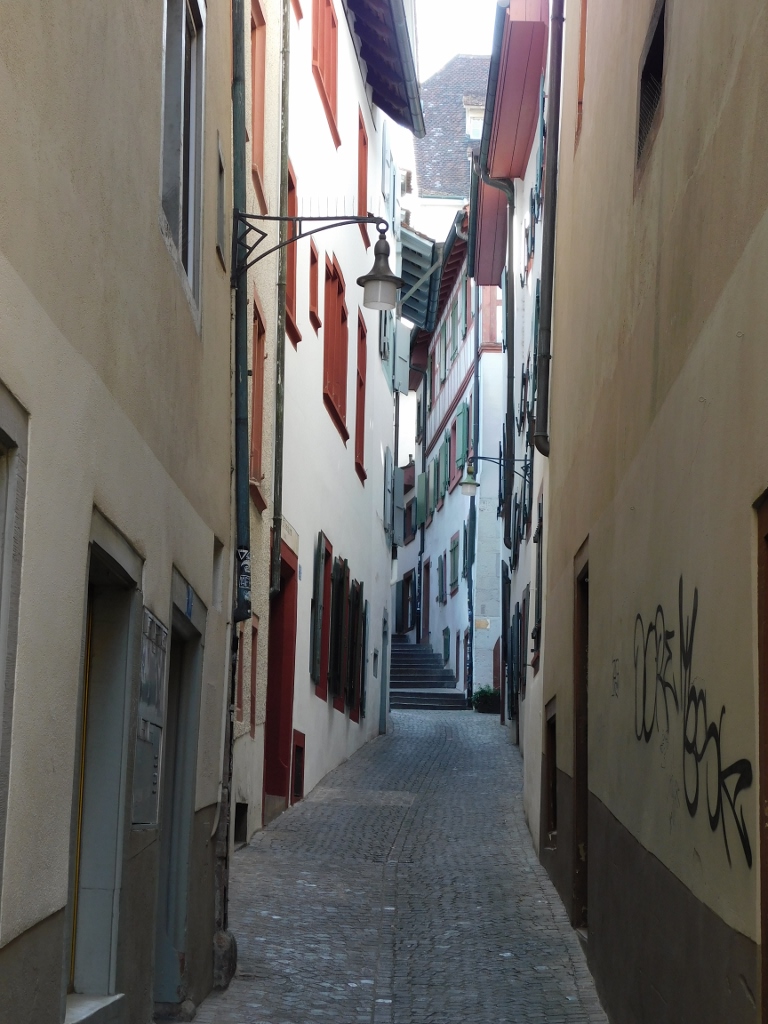 Old Streets of Basel, a detail
Old Streets of Basel, a detail
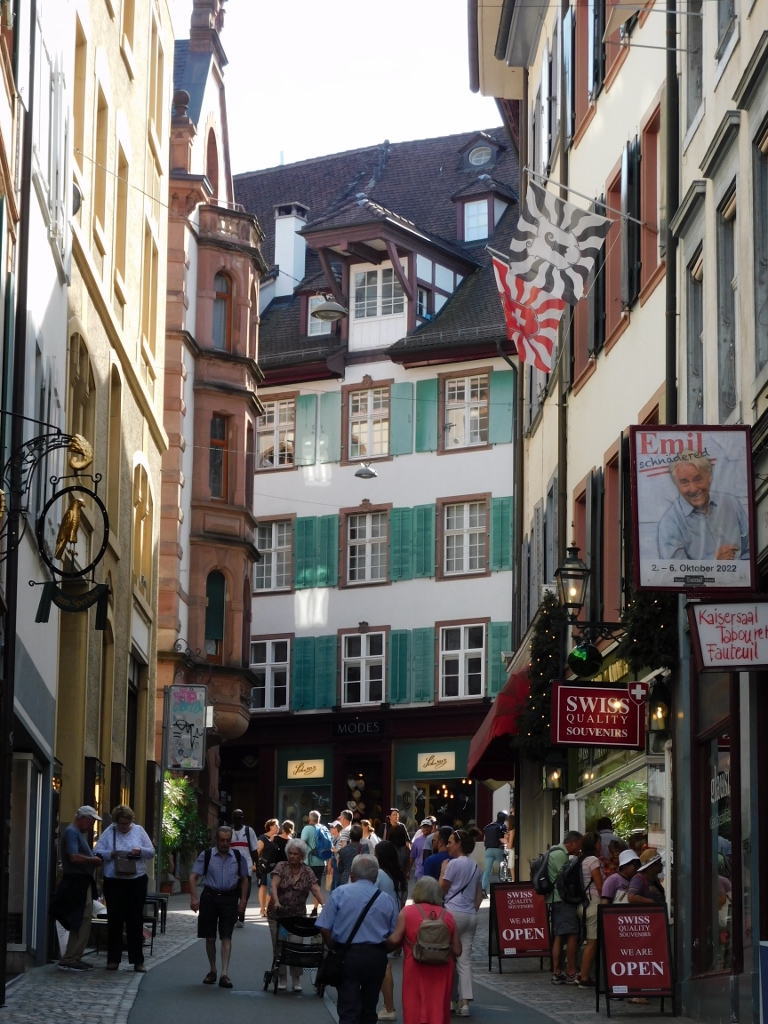 Old Streets of Basel, a detail
Old Streets of Basel, a detail
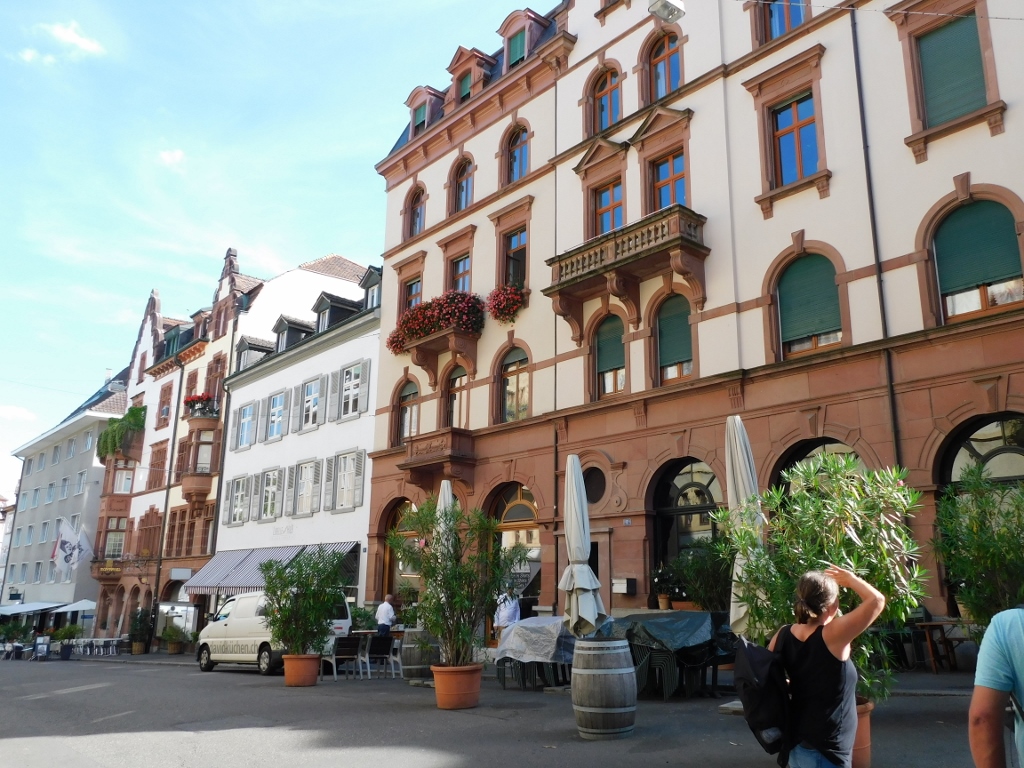 Old Streets of Basel, a detail
Old Streets of Basel, a detail
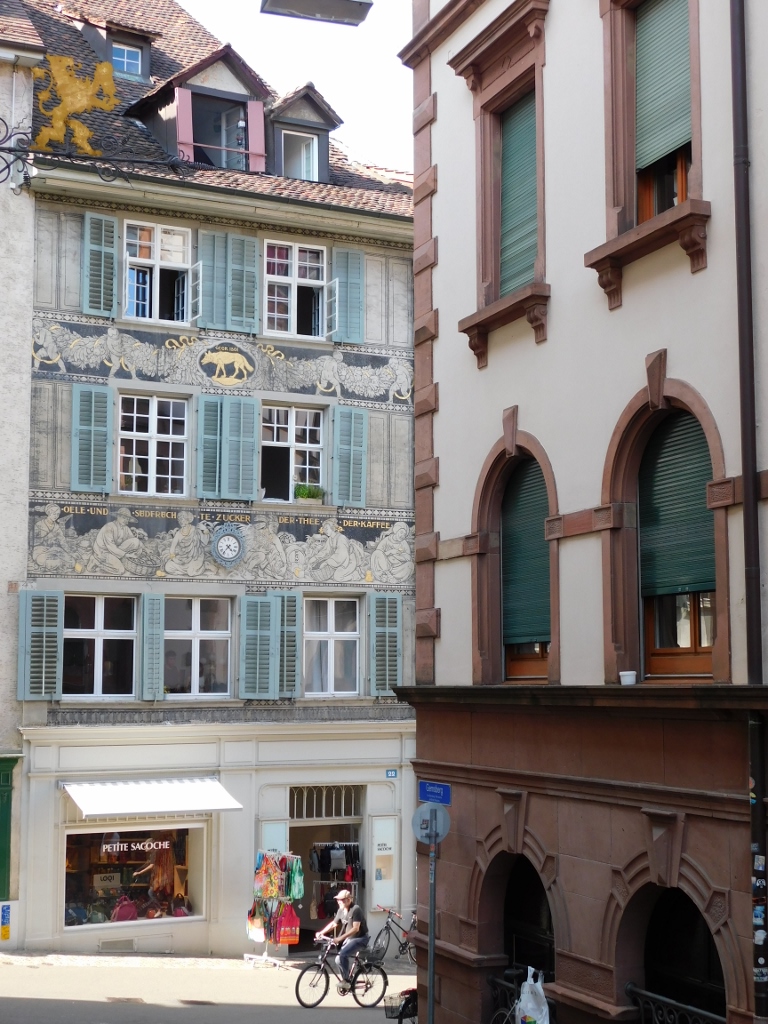 Old Streets of Basel, a detail
Old Streets of Basel, a detail
When you head along Gemsberg street, you should note a fountain of the same name, Gemsberg Brunnen, located in a small square and exhibiting a lovely statue of a chamois on its top.
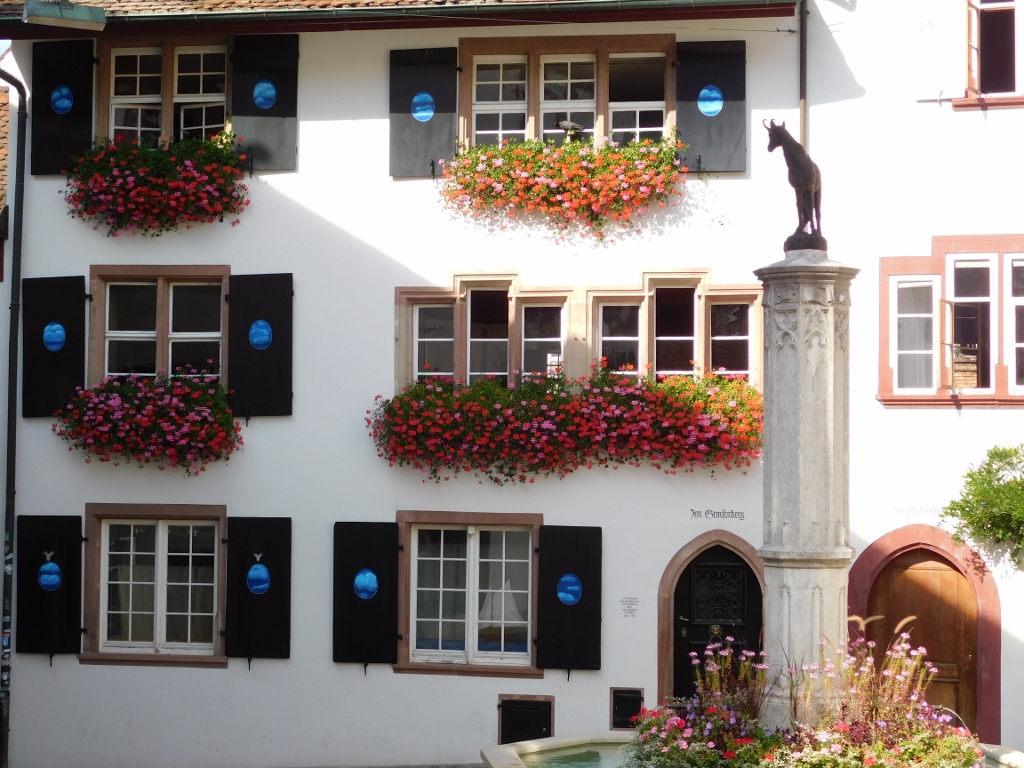 Old Streets of Basel, a part of the Gemsberg fountain
Old Streets of Basel, a part of the Gemsberg fountain
As for Heuberg street, there are upper and lower segments. The lower one starts from the Gemsberg fountain and then you can go a little bit around. The point is that there are houses from the 13th and the 14th centuries, although all of them are beautifully maintained and you cannot actually see this age.
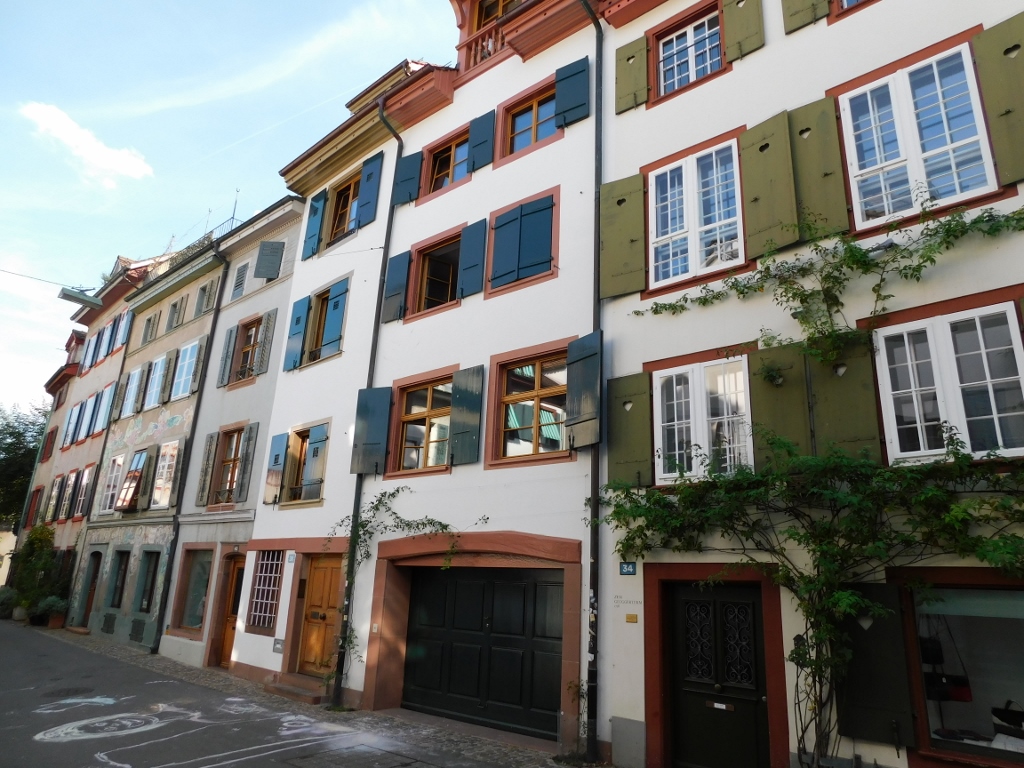 Heuberg street, a detail
Heuberg street, a detail
From here I continued with my stroll in the westbound direction and all one needs to do here is to go straight until reaching Spalenvorstadt street.
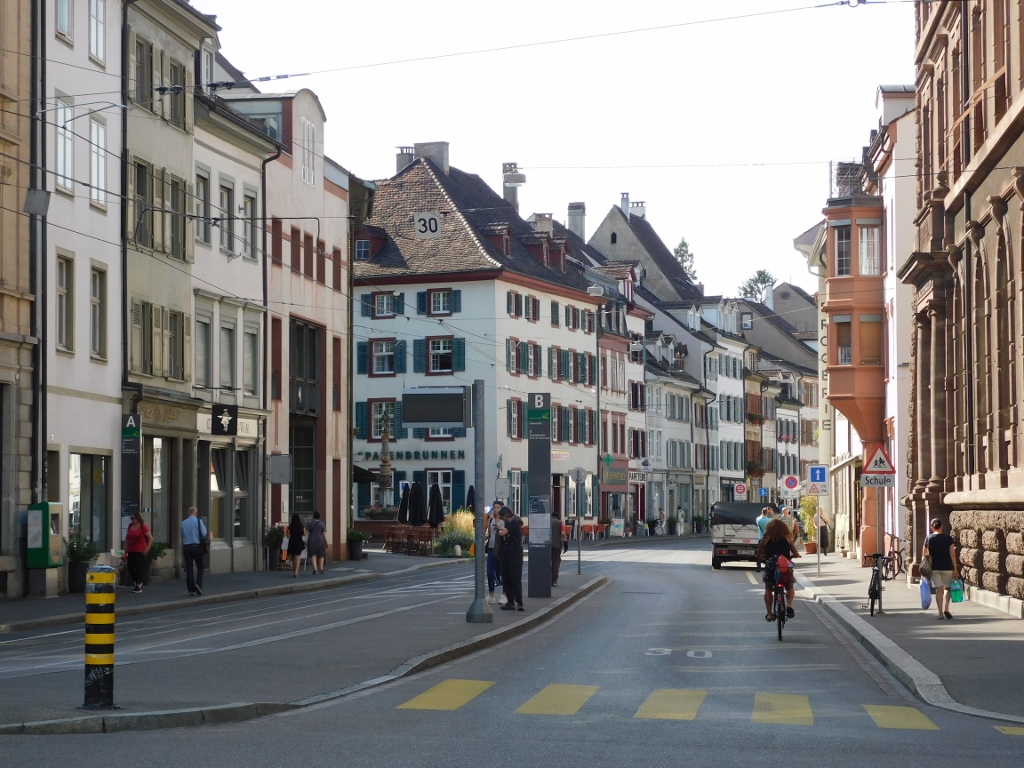 Spalenvorstadt street
Spalenvorstadt street
This street is important because of two monuments of culture. Both of them can be seen in the photo below. In the foreground there is the Holbein fountain (Holbein-Brunnen), also known under the name of the Bagpiper fountain (Sackpfeiferbrunnen). For some reason it is not clearly marked on the internet map, but it can be found easily, at the corner with Schützenmattstrasse street. The fountain dates back to the 16th century and it was made on the basis of a drawing by Holbein, hence the name.
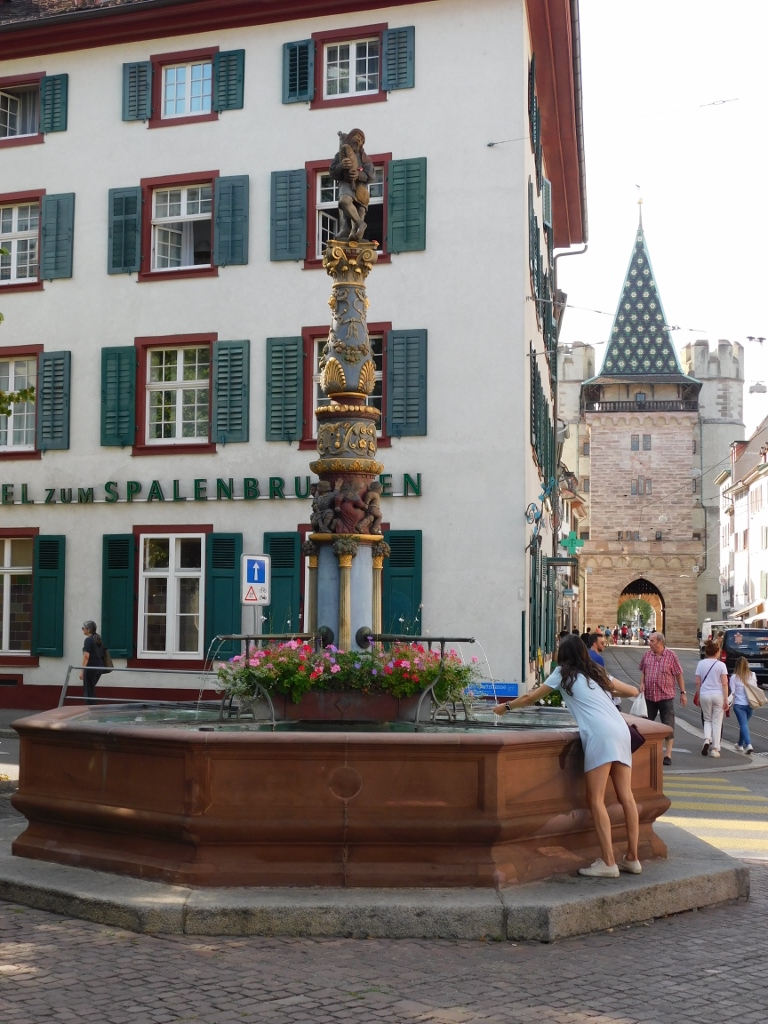 Holbein fountain
Holbein fountain
A little farther away in the photo above, on the right-hand side, you can see the other important monument of culture found in this part of the city. This is the Spalentor, a monumental city gate from the 13th-14th century.
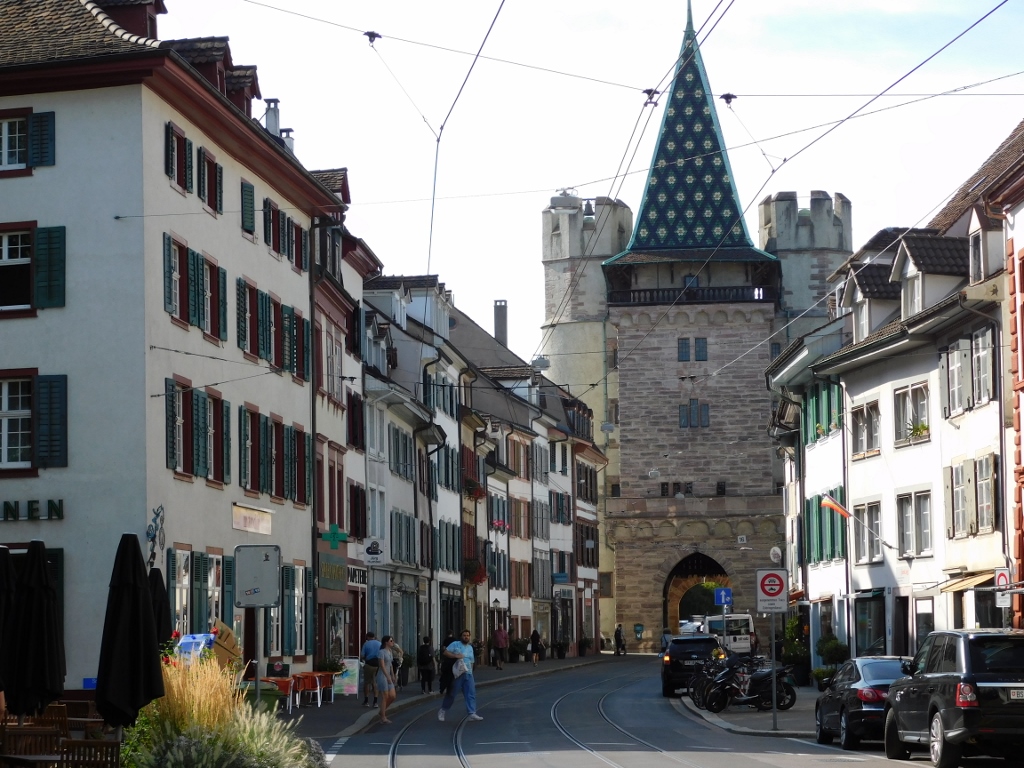 Spalenvorstadt street and the Spalentor
Spalenvorstadt street and the Spalentor
I walked through the gate and looked at it well from the exterior side, too.
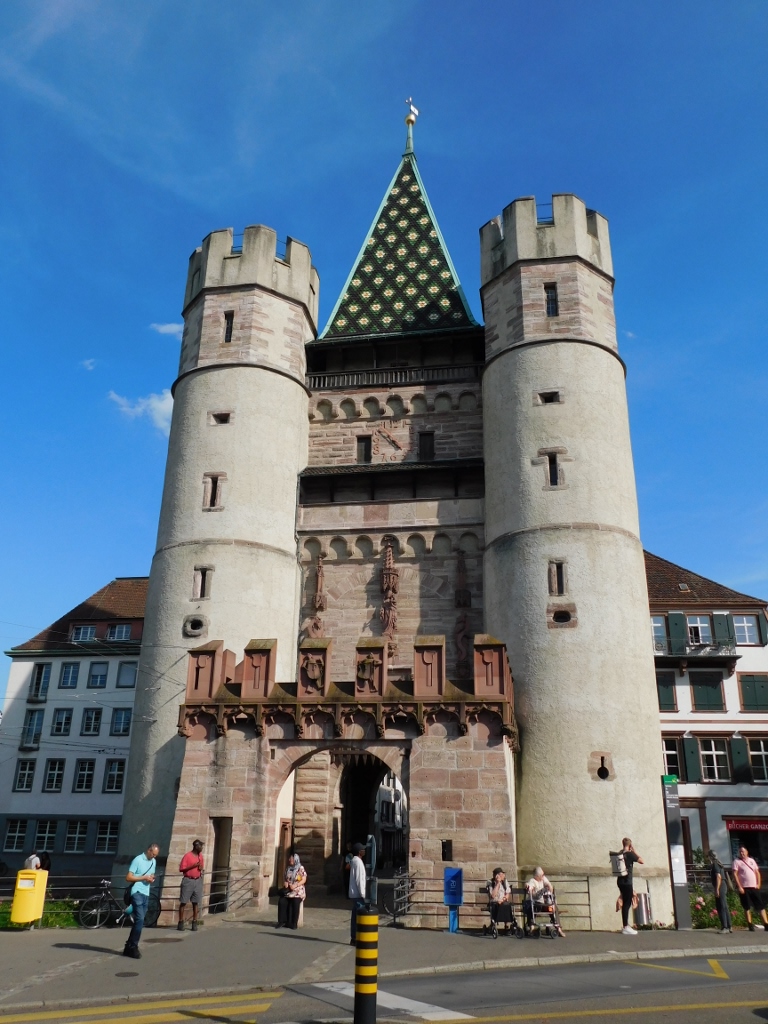 Spalentor seen from the west side
Spalentor seen from the west side
Now I started with an easy stroll towards a church, but along the way I came across yet another fountain in which some children bathed and demonstrably had fun.
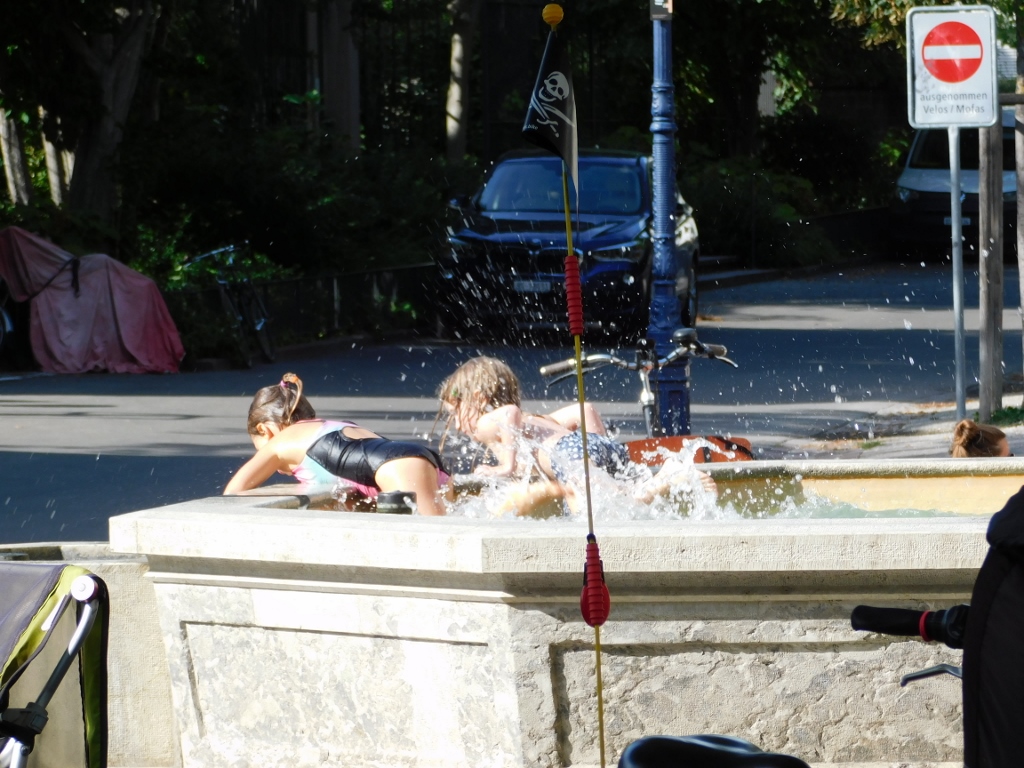 Having fun while splashing around
Having fun while splashing around
It was very warm on this day, over 30 degrees C, and that was certainly quite hot for Basel and Switzerland, so this bathing of children should not come as a surprise. There were many children around the fountain, as well as parents who came there as if on a picnic. Some of them had spread towels by the fountain to sit there, while the children cooled down in the fountain and played around it. There was a lot of screaming and children’s joy.
But, it was not only children who cooled down on this day. There were also some adults; for instance, in another public fountain. Yes, this was a very hot day indeed.
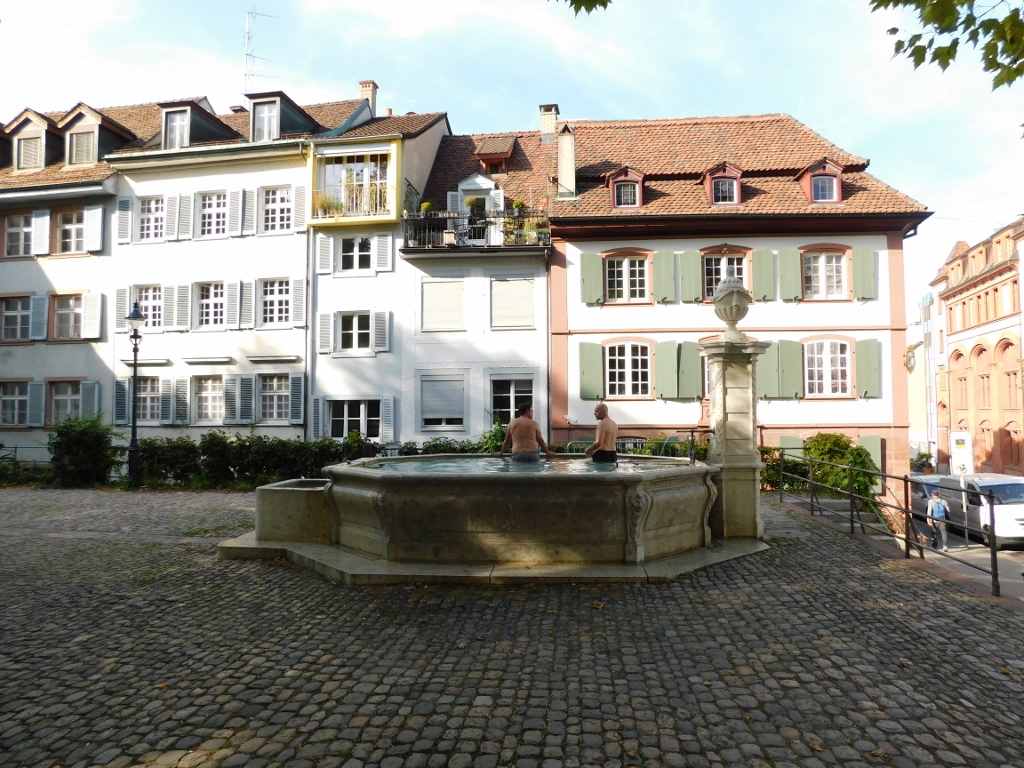 When it’s hot, everybody enjoys cooling down in fresh water
When it’s hot, everybody enjoys cooling down in fresh water
Not only did I come across some people using public fountains to cool themselves down, I also came across the entrance into the University of Basel Botanical Garden, so I got in and walked around a little. It was not bad and I actually quite enjoyed the stroll.
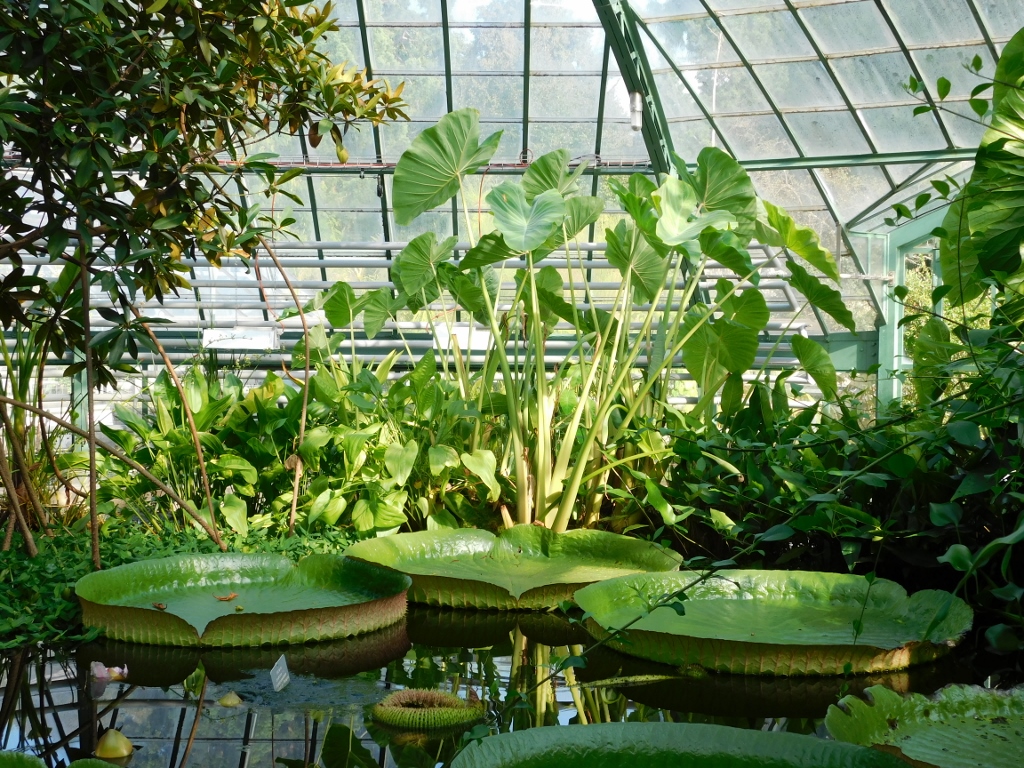 University of Basel Botanical Garden, a detail
University of Basel Botanical Garden, a detail
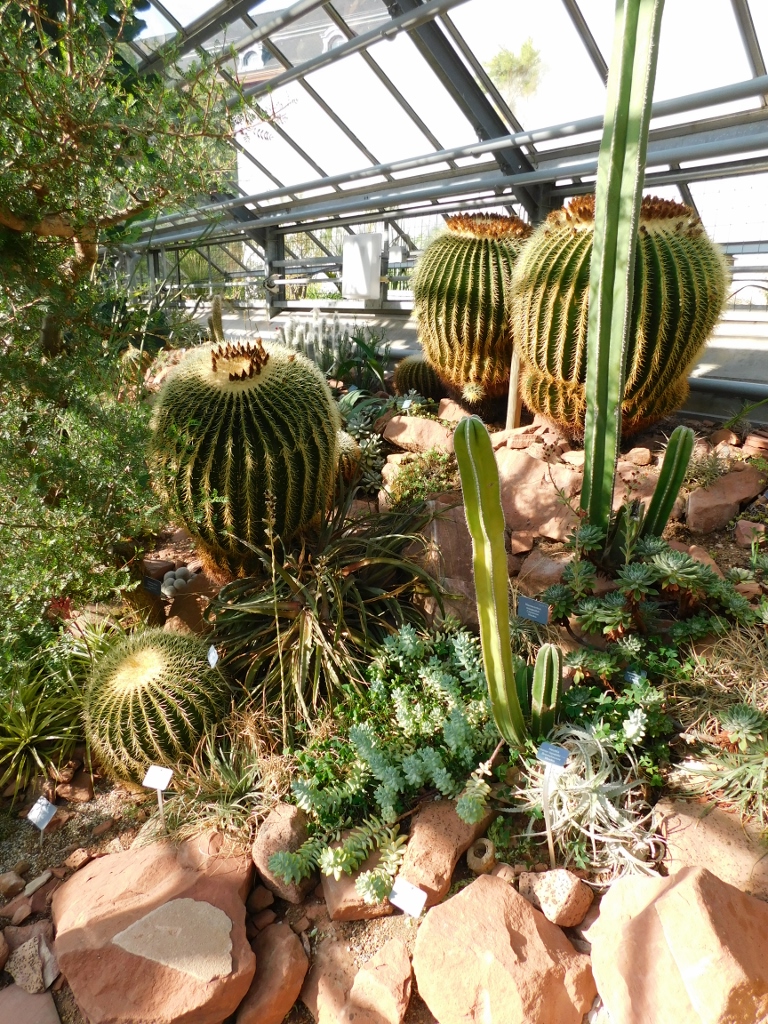 University of Basel Botanical Garden, a detail
University of Basel Botanical Garden, a detail
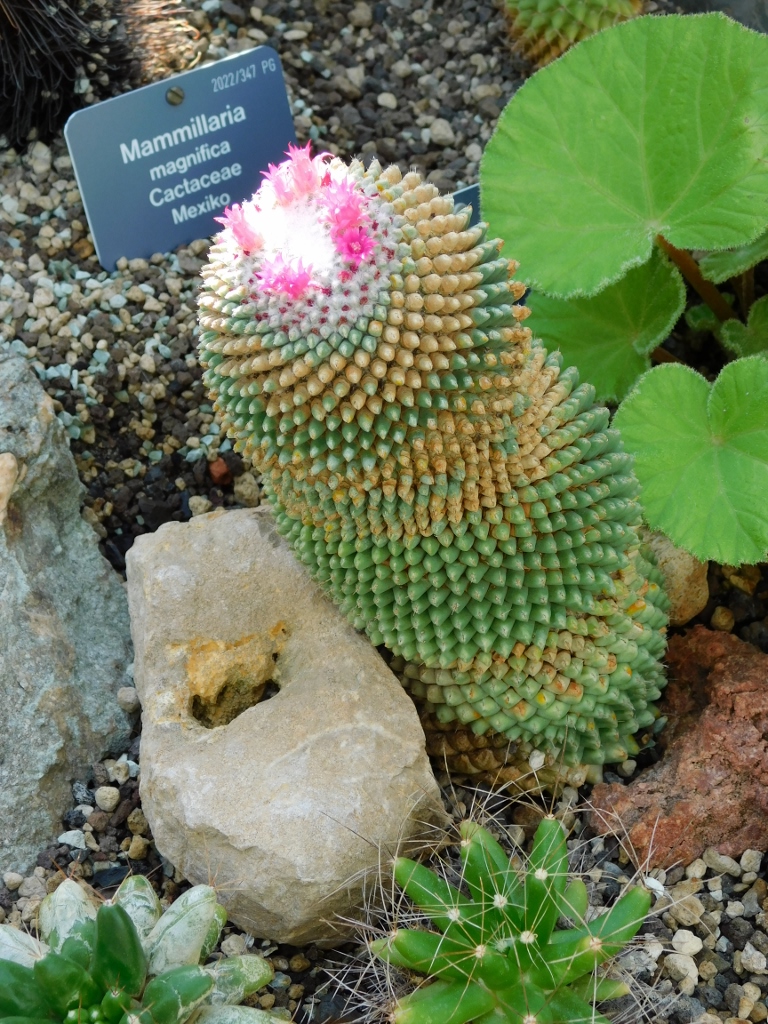 University of Basel Botanical Garden, a detail
University of Basel Botanical Garden, a detail
Soon I reached the Church of St. Peter (Peterskirche) in which there are some beautiful 14th- and 15th-century frescoes, but I could not see those since the church was closed.
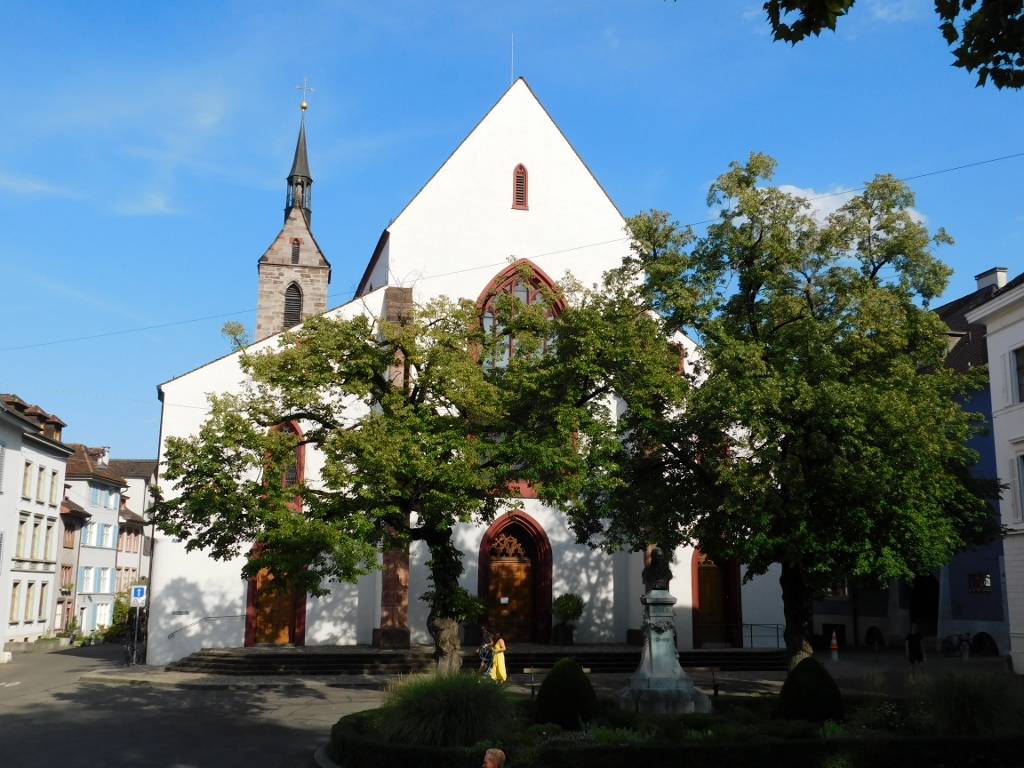 Church of St. Peter
Church of St. Peter
Here I practically finished with my sightseeing of Basel and the places I had in my visiting plan. Still, this did not mean that I did not continue to enjoy the walk. Not far from the Church of St. Peter there is another street with lovely houses that date back to the Middle Ages.
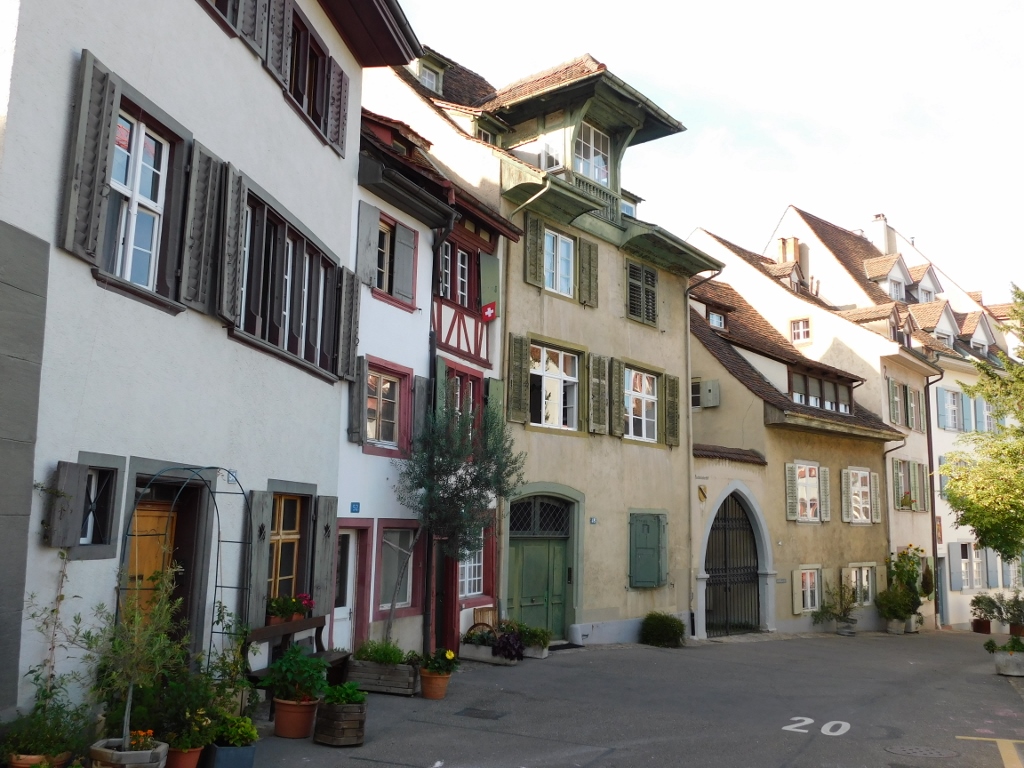 Petersgasse street
Petersgasse street
Still, I did not continue along this street, opting rather to go down to the Marktplatz by a wide step street. This passage has a very interesting name –Totengässlein, meaning “the alley of the dead,” and it is also called Totenweg, meaning “the way of the dead.” Namely, there was a medieval legend which said that many people got killed here in an earthquake of 1356. On the other hand, this was the way towards the cemetery next to the Church of St. Peter, which meant that coffins with the deceased were regularly carried along. By the way, the cemetery was closed in 1836, but the name of the street remained.
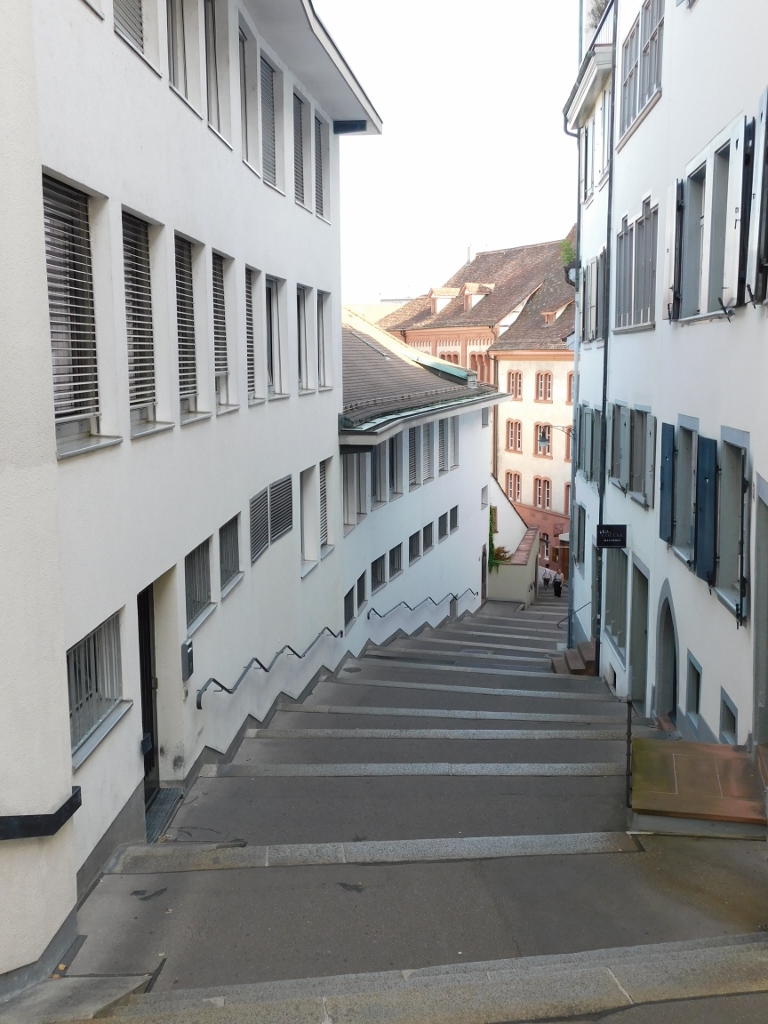 Totengässlein
Totengässlein
Today, this is just an ordinary passage with wide steps and soon enough I reached the Marktplatz and the City Hall. It still looked very impressive.
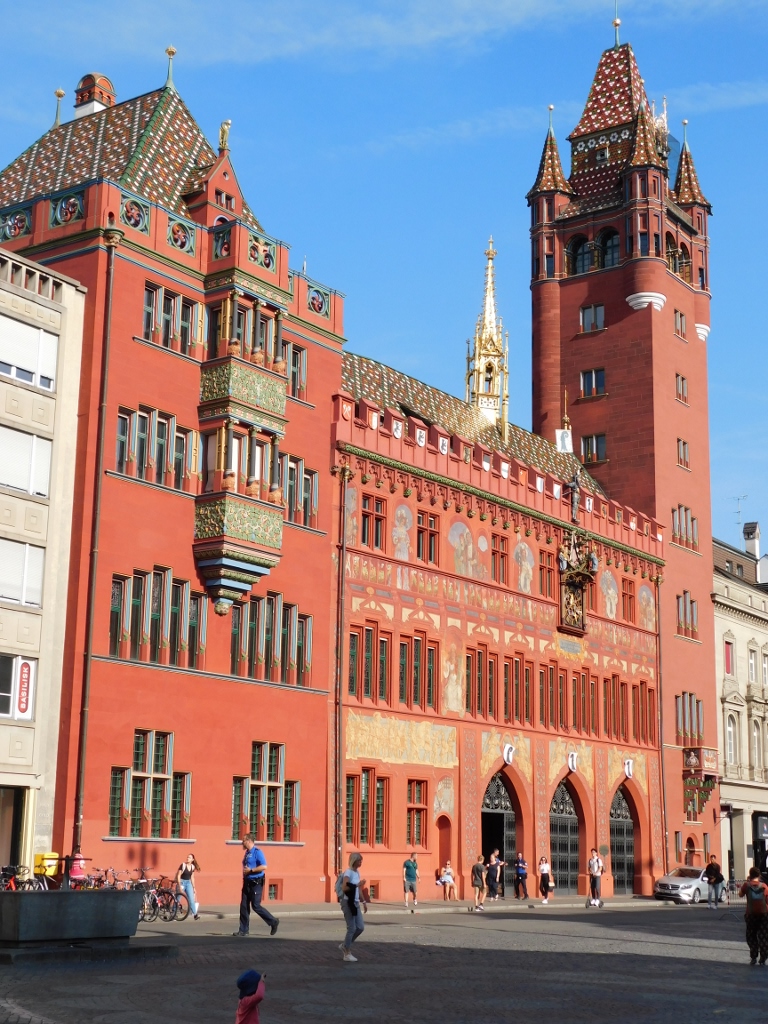 City Hall at the Marktplatz
City Hall at the Marktplatz
Here I started seriously pondering the idea of taking a tram back to the railway station, since I was quite exhausted by this time. But, the fate wanted me to walk back. Namely, on this day, the 125th anniversary of the First Zionist Congress held in 1897 right here in Basel was being marked. All the time I was walking around, I could hear some helicopters flying above the city centre and as I was told now, the trams did not operate on all of the lines. One of those not covered was the one to the railway station. Well, alright. A little more walking would do me no harm and I also thought that I could sit down somewhere and eat something.
And so, the walking back took me by the Basel Historical Museum which is one of the biggest of its kind in Switzerland. Its main section is situated in the former Franciscan church, Barfüsserkirche, that has its roots back in the 13th century. During the Protestant Reformation, the church was handed over to the city and was used for various purposes and since the end of the 19th century it has been used as the Historical Museum.
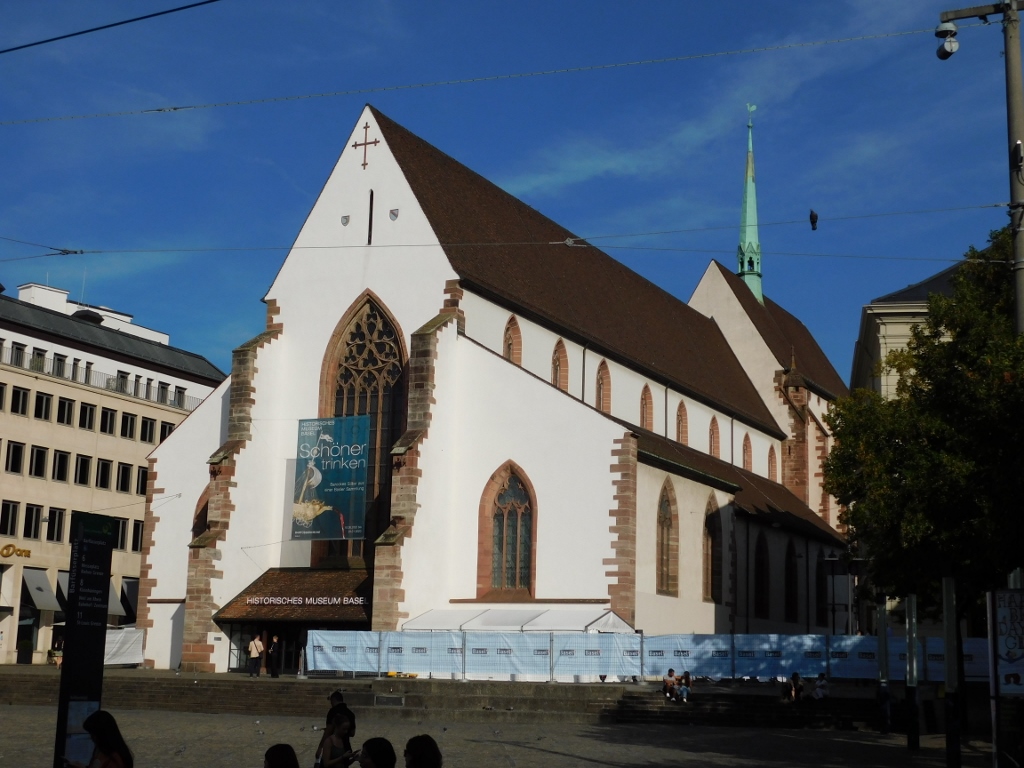 Basel, a detail
Basel, a detail
There were some other nice buildings as well and I also reached the walking street, Steinenvorstadt, full of shops, restaurants and cafés. The right place at the right time. So, I took a seat and ordered a large salad, but what really felt perfect at this point in time was a local beer.
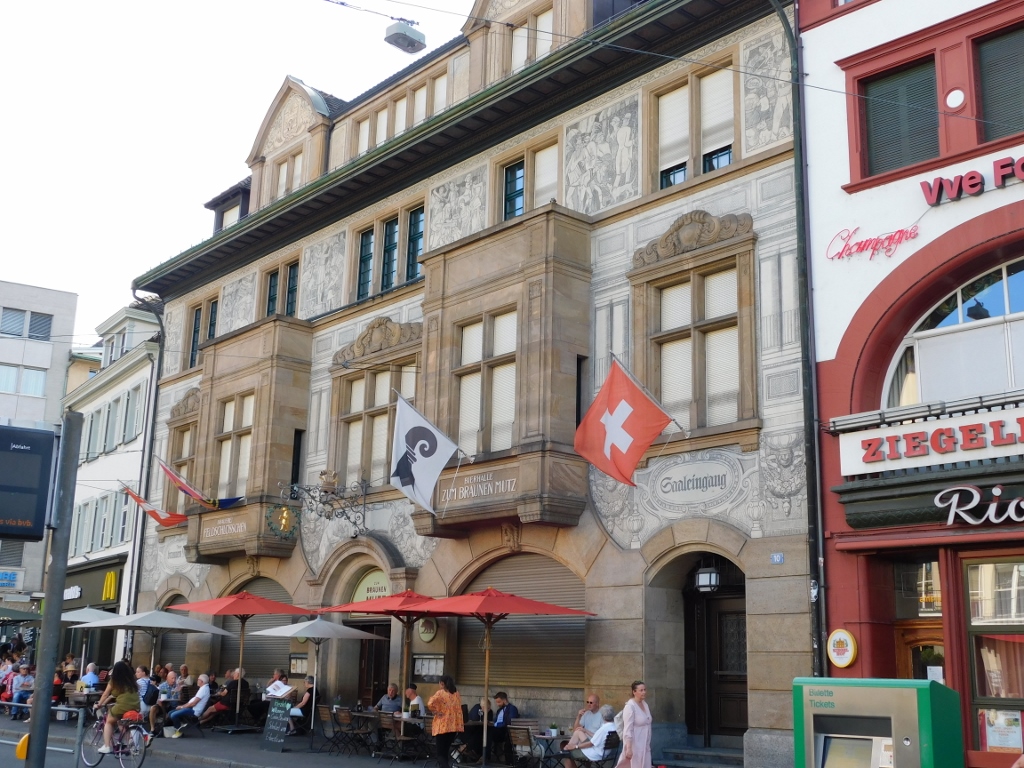 Basel, a detail
Basel, a detail
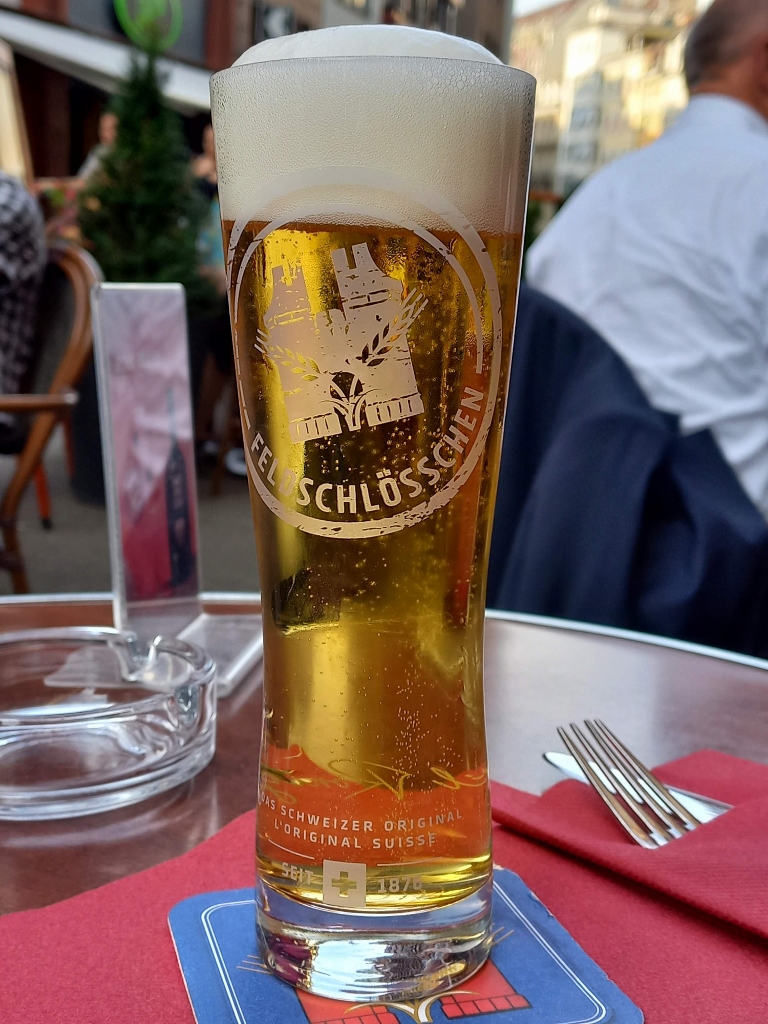 Cold beer
Cold beer
After the nice food and drink break, I went to the railway station from where I transferred back to Mulhouse, France, where I was stationed these days. I was far too tired and exhausted by the heat of the day to go out in the evening, plus I had to have a good rest because of my plans for the following day.
When I made plans about the sequence of my visits, whether I should first go to Switzerland or Strasbourg, I consulted the weather forecast, which was quite changeable, just like the weather itself. As it turned out, in the end both days were sunny and warm, almost hot (around 30 degrees C). As for the museums, I should have done exactly the opposite of what I actually did. The museum in Basel is closed on Mondays, while some of the more important museums in Strasbourg are closed on Tuesdays. But, I am not the kind of person who worries too much about such things. On the one hand, there is absolutely nothing I could do about it, on the other one, I say to myself that such as it is this is certainly the best outcome for me.
That’s why on this day I simply got on a train and headed from Mulhouse to Strasbourg. The regular trains between these two cities take around one hour.
I found it particularly interesting to look at the surroundings along the way. A couple of days earlier, I drove by car somewhere here, so it was with pleasure that I reminisced that experience.
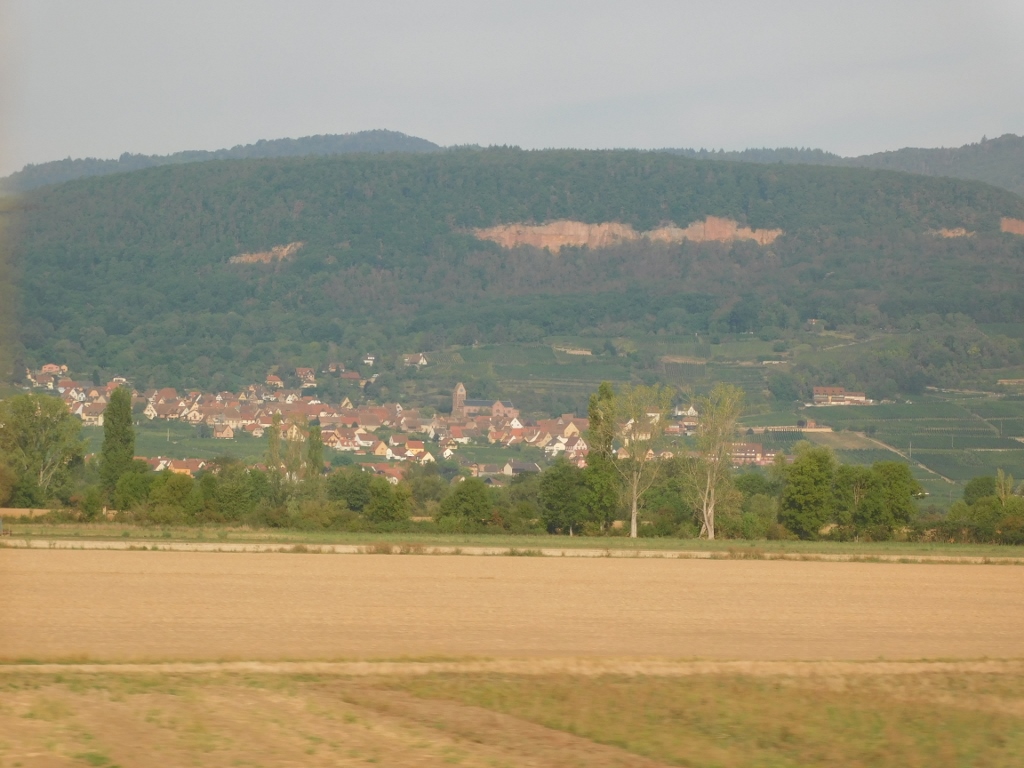 Landscapes in eastern France
Landscapes in eastern France
In one section, the railway runs directly alongside numerous vineyards that this region is famous for.
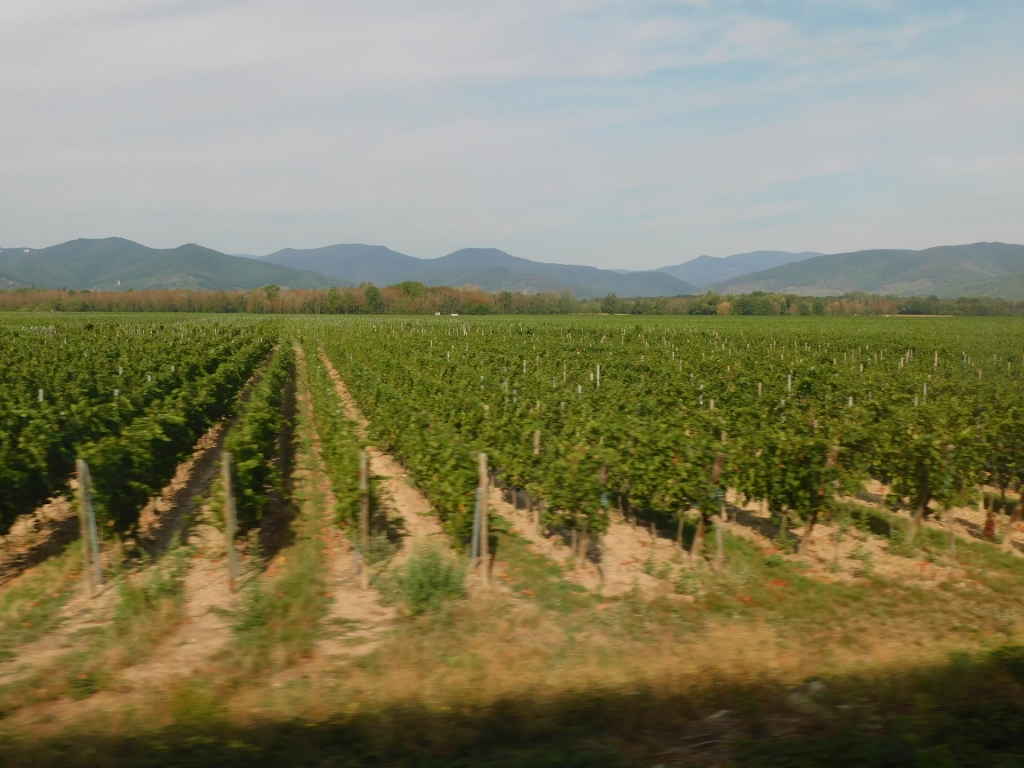 Vineyards belonging to the Alsace Wine Route
Vineyards belonging to the Alsace Wine Route
I felt especially glad when on the top of a hill I noticed the Château du Haut-Koenigsbourg that I had visited a couple of days before.
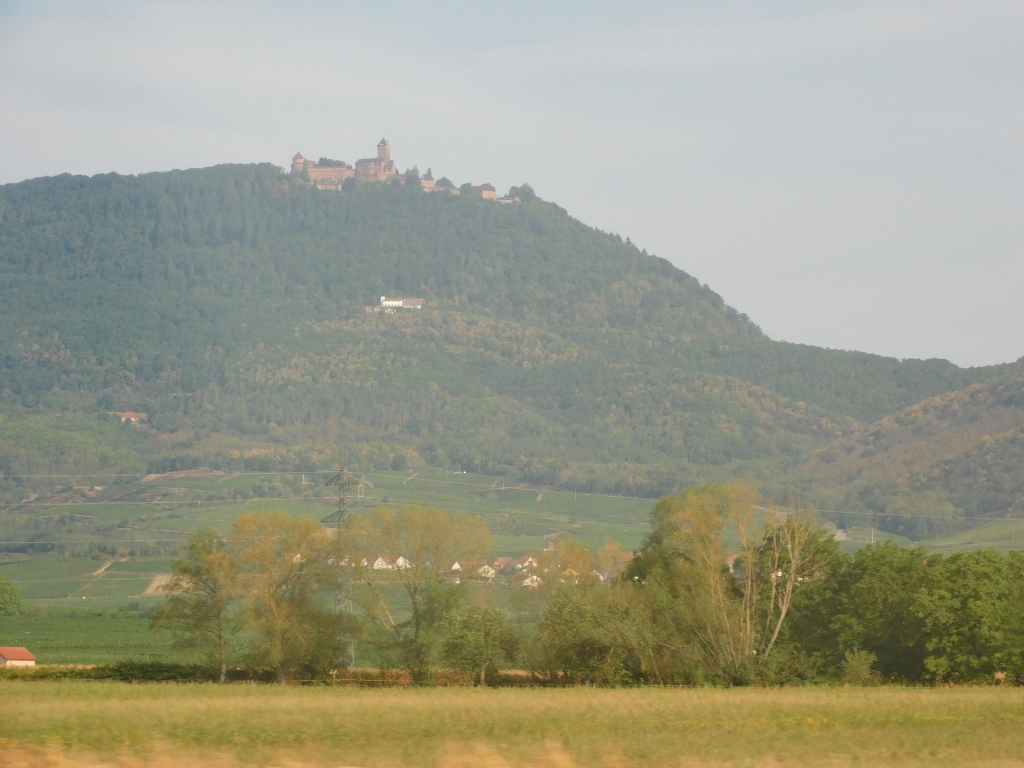 Château du Haut-Koenigsbourg
Château du Haut-Koenigsbourg
But, as I’ve said, this is not a long train ride, so soon enough I was getting out of the railway station in Strasbourg. It has a rather modern shape.
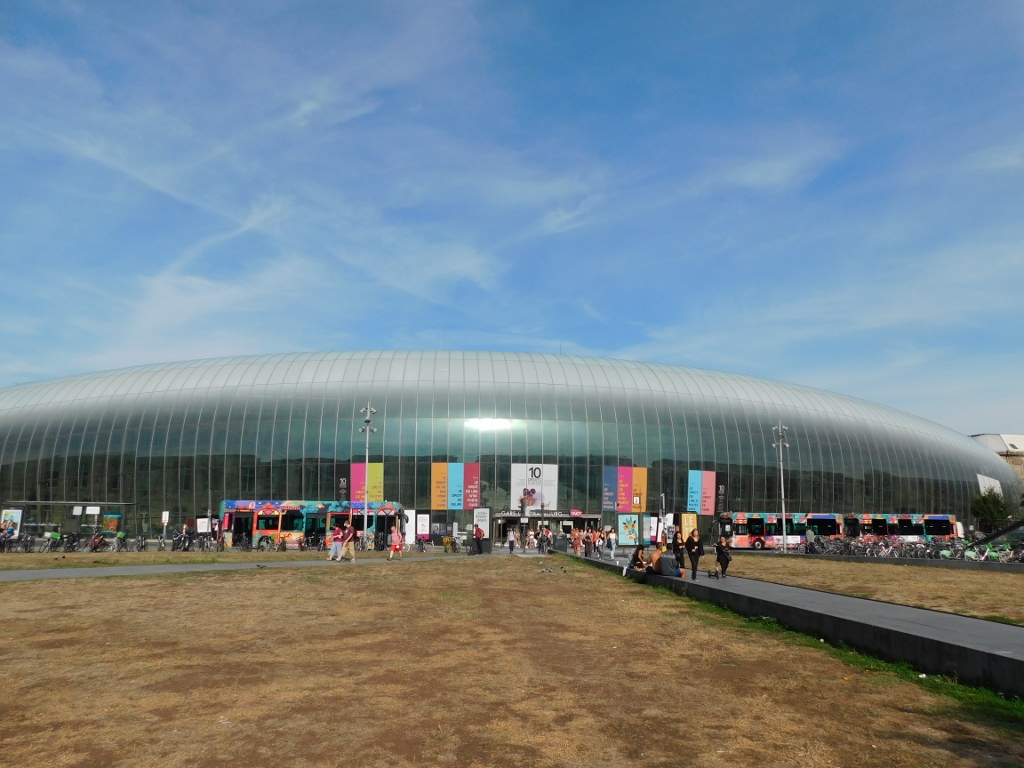 Railway station in Strasbourg
Railway station in Strasbourg
I have already mentioned that it was quite hot these days bearing in mind it was the end of August. I guess because of these high temperatures, on a plateau in front of the railway station, at the end of a path leading to the centre, there was a system installed that occasionally dispersed miniature water droplets, which seemed like a fog, but was rather refreshing, albeit for a shortest of while. I think it would have been better if they planted trees in front of the railway station instead of creating a lawn, but nobody asks me about these things.
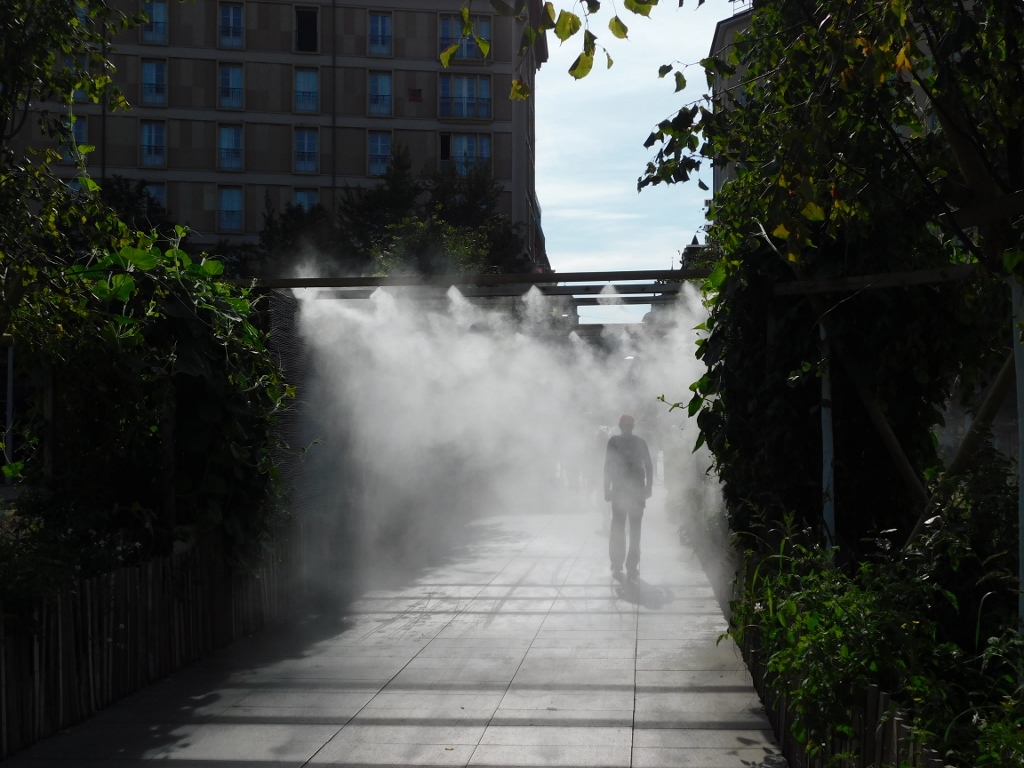 Cooling system
Cooling system
Strasbourg is the capital of the region of Alsace. Although it is a city with a long history, nowadays it is referred to mostly when mentioned as the place where the European Parliament and the Council of Europe are located. I must admit I was not interested in this in the least. On the other hand...
The historic centre of the city is inscribed on the UNESCO’s World Heritage List and that was altogether a different story. That is why I actually came to Strasbourg. Although at first I walked a little bit around looking for a specific shop (oh, yes... sometimes even I want to buy something), I was basically moving in the city centre direction.